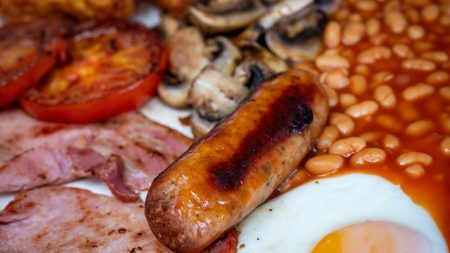Gout, historically misconstrued as the “disease of kings” due to its association with wealthy, indulgent men like Henry VIII, is a prevalent arthritic condition affecting approximately 1-2% of the UK population. Contrary to popular belief, gout can affect anyone regardless of gender, socioeconomic status, age, or dietary habits. Recent accounts from celebrities like James Corden have brought the condition back into the spotlight, highlighting its painful reality and challenging the outdated stereotypes surrounding it. Corden’s experience, which included significant weight loss, underscores that rapid weight fluctuations, even if intended for health improvement, can paradoxically trigger gout attacks. This is because rapid cell breakdown during weight loss releases uric acid, the culprit behind gout, into the bloodstream.
Gout arises from excessive uric acid in the blood. This excess leads to the formation of needle-like urate crystals within joints, triggering intense inflammation characterized by severe pain, swelling, and redness, most commonly affecting the big toe. While often initially affecting the big toe, gout can impact various joints, including fingers, wrists, elbows, and knees. Dr. Hilary Jones, a prominent TV medic, cautions against drastic weight loss methods and sudden alcohol cessation, both of which can exacerbate gout. Instead, he advocates for gradual, sustainable lifestyle changes, incorporating a balanced diet and regular exercise to minimize the risk. Rapid weight loss and abrupt alcohol withdrawal can paradoxically increase uric acid levels, thus increasing the risk of gout attacks.
Upon suspecting gout, prompt consultation with a GP is crucial. Diagnosis typically involves blood tests to identify elevated uric acid levels. Symptoms indicative of gout include intense joint pain, particularly in the big toe, accompanied by redness, swelling, and warmth in the affected area. Chills, fever, hard lumps under the skin (tophi), and even deformities can also manifest in chronic cases. Fortunately, gout is treatable and often curable with appropriate medical intervention and lifestyle adjustments. If left untreated, however, gout can lead to chronic joint damage and other complications.
Treatment usually involves urate-lowering therapy drugs like allopurinol, which help manage uric acid levels and prevent future flare-ups. Alongside medication, lifestyle modifications are essential for long-term management. The UK Gout Society recommends reducing consumption of purine-rich foods, such as red meat, shellfish, asparagus, organ meats, anchovies, mackerel, dried beans, peas, and yeast-heavy foods and beverages, especially beer. Purines are broken down into uric acid by the body, contributing to crystal formation. Instead, prioritizing a diet rich in fruits, vegetables, whole grains, and low-fat dairy can help prevent flare-ups.
Beyond the well-known symptoms, gout can present with less obvious signs. These include thickened nails due to urate crystal deposits, erectile dysfunction in men (potentially linked to systemic inflammation and vascular issues associated with gout), heightened nighttime pain, itchy or peeling skin around the affected joint post-flare-up, and chronic fatigue. While primarily a joint condition, the systemic inflammation associated with gout can contribute to overall fatigue and malaise. Recognizing these lesser-known symptoms can aid in earlier diagnosis and management.
During an acute gout attack, immediate care involves resting the affected joint in an elevated position. Regular exercise is beneficial for long-term management but should be avoided during a flare-up. Dr. Jones emphasizes the importance of adequate hydration, recommending 8-10 glasses of water daily to flush uric acid from the body and reduce crystal formation. This holistic approach, combining medication, dietary adjustments, and lifestyle changes, offers the most effective way to manage gout and improve overall health. Avoiding crash diets and sudden alcohol withdrawal and instead focusing on gradual, sustainable changes is key to both weight management and gout prevention.











